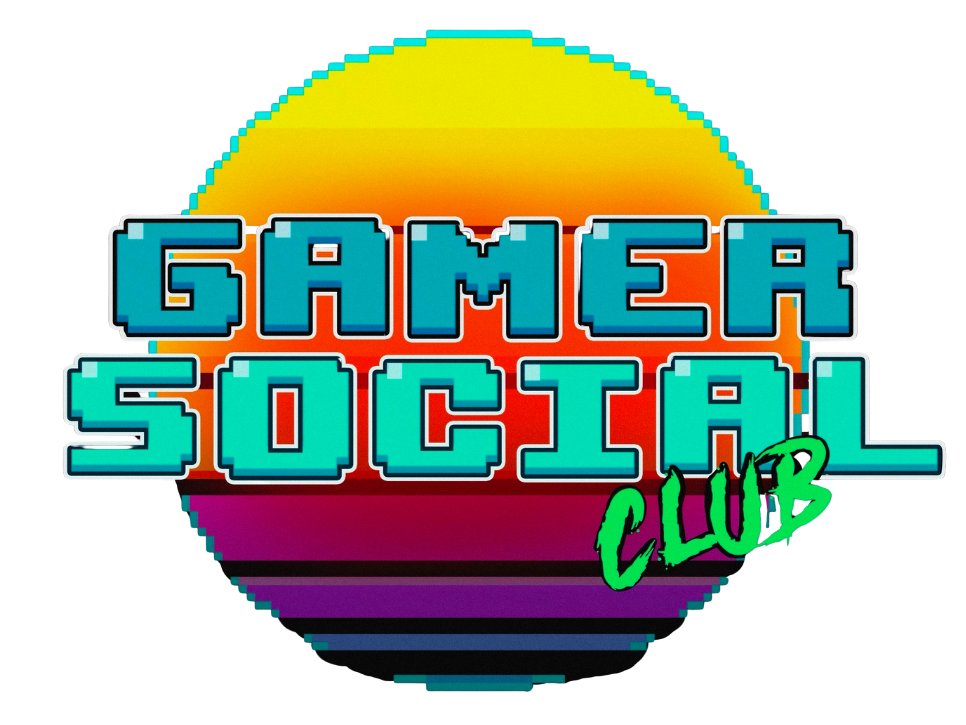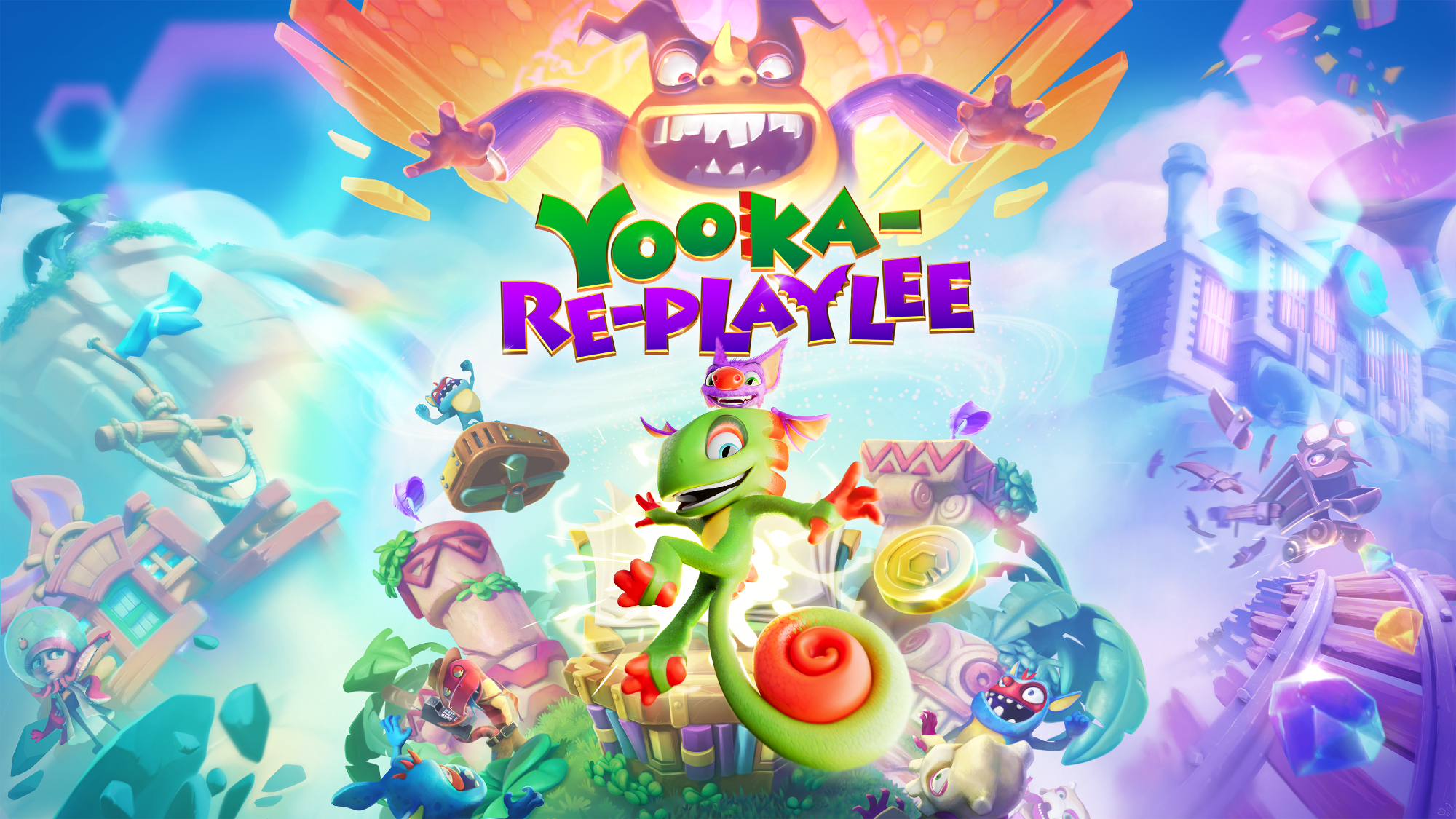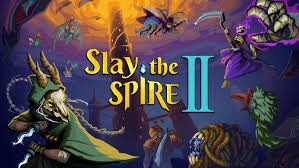In a time with as many remakes and remasters of classic beloved titles, arguably many of which don’t need the rethreading to begin with, there’s been a small but vocal outcry for developers and publishers to look to games that had great potential but missed the mark for some extra love and attention and turn what could have been good games into truly great games. It’s something that sounds almost too good to be true in an industry in which many developers can’t survive on anything less than record breaking sales. In this regard, it feels like a miracle that Yooka-Replaylee, a “remakester” of 2017’s middlingly rated Banjo-Kazooie spiritual successor, not only exists, but is an absolute triumph and improves on its predecessor in almost every way.
Yooka-Replaylee sees Playtonic Games, a studio comprised of ex-Rare developers, return to their debut game that broke Kickstarter records when it launched its campaign ten years ago, not to relive the glory days but to listen to the fan and critical feedback and deliver the game it was always meant to be. That means overhauling everything, from visuals and audio to game design and controls. What results is an almost surreal experience that makes the original Yooka-Laylee feel like a prototype.
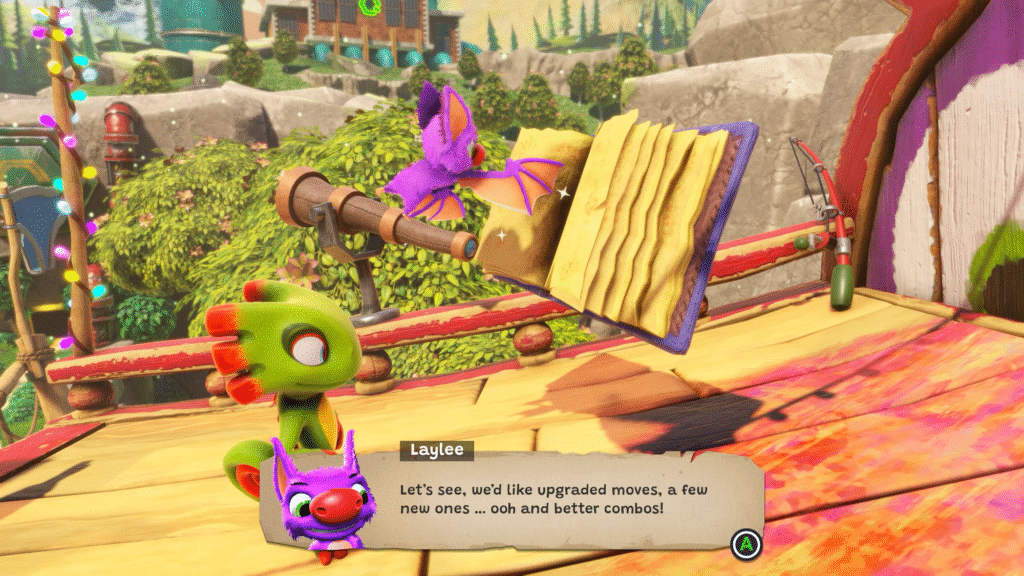
Story
Contextualized as a recollection of the original through a storybook format, Yooka-Replaylee follows its titular characters as they make their way through Hivory Towers trying to reunite Pagies (anthropomorphic pages) with the One Book, which the villainous Capital B has destroyed and separated in an attempt to use it to rewrite the universe. The major beats are more or less the same as the original save for some pacing changes and a few differences in the ending, but ultimately the story is just a vessel for Playtonic to deliver some of its great tongue-in-cheek writing, which is no disappointment. I was surprised by how much I genuinely laughed at Yooka-Replaylee, with some genuinely great one-liners coming from its hilariously named cast such as “Trowser” the snake, “Kartos” the minecart, and “Planker” the sign post. Playtonic’s writing also seems a lot more confident in itself this time, as a lot of the annoyingly self-depricative quips from the original game have thankfully been done away with and replaced with genuinely funny interactions that bring the dry British wit center stage and add personality to its enjoyable cast of characters.
Gameplay
Like its main influence, Yooka-Replaylee is a collect-a-thon 3D platformer where the player controls the eponymous chameleon and bat as they collect Pagies, Quills, and more through five levels. The changes from the original are felt immediately, as the duo are equipped with all of their abilities from throughout the original game right from the jump. Controls have been tightened to perfection, with jumping, gliding, rolling, and attacking all feeling instantly satisfying and smooth. This combines with nearly completely revamped level designs to fix one of the original game’s biggest criticisms – levels no longer feeling too big for traversal. Thanks to the unlimited rolling ability and finer tuned platforming mechanics, exploring Yooka-Replaylee’s five massive worlds and expansive hub world feels excellent and far more comparative to some of the genre’s strongest modern titles like Donkey Kong: Bananza and Astro Bot. The ability to fast travel around each map after finding bookmark characters has also been added, which alleviates a lot of the frustration of having to rush from one side of the map to another even despite the increased traversal options and tightened controls.
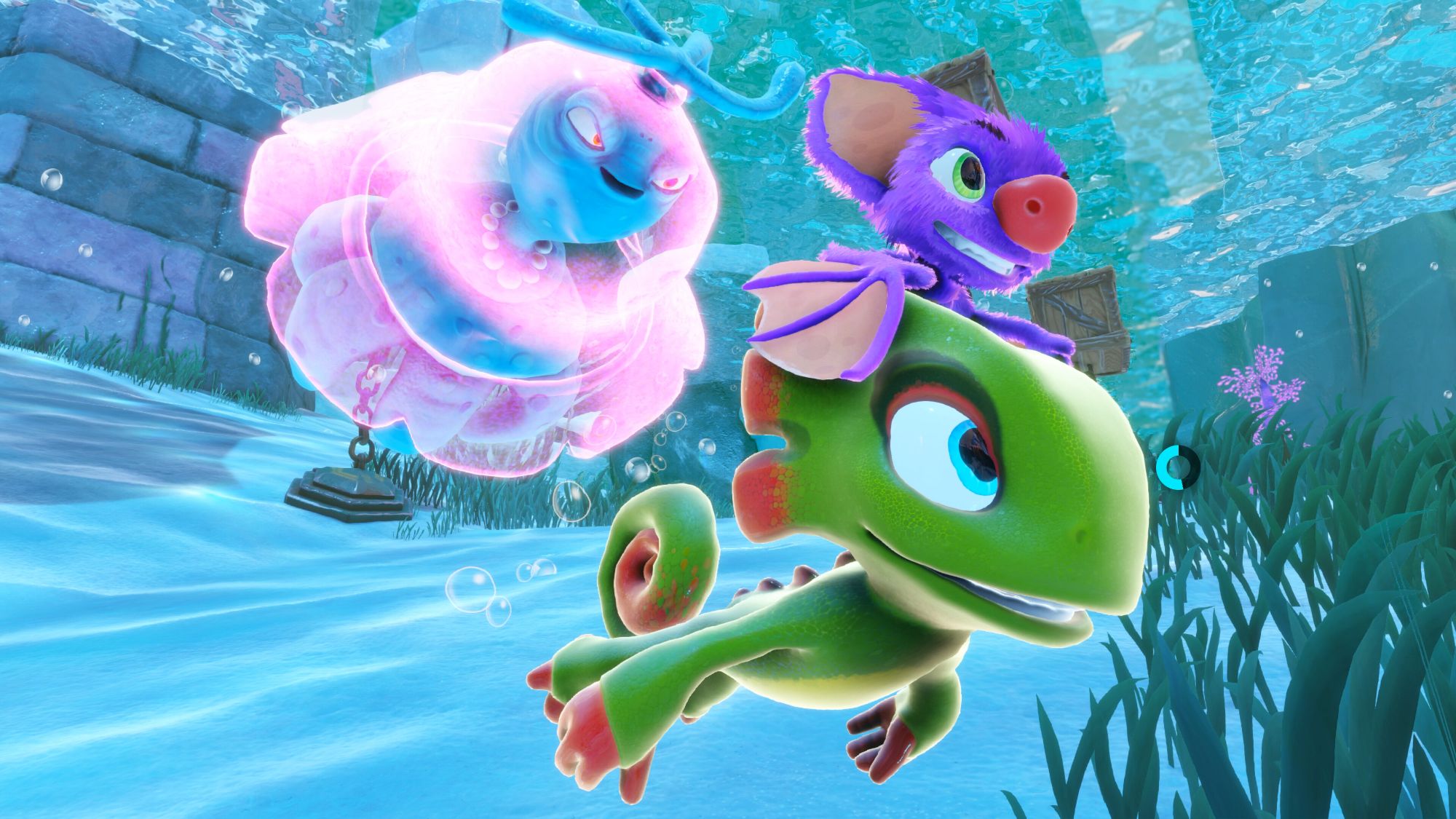
Also returning are Tonics, the gameplay modifiers that allow for customization of the experience in exchange for coins or quills. These range from cosmetic changes such as adding Conker’s Bad Fur Day-like googly eyes to all of the enemies, to difficulty buffs including a one-heart mode in which the player dies in one hit. If some are finding the game too easy or difficult, these modifiers can add additional flavor to the experience.
Unlike the original, levels do not need to be expanded anymore, cutting out one of the more frustrating elements of busywork which saw players leaving and then returning to their current levels, which ruined the progression of collection. Players can finally be left to 100% each level before moving on this time. Instead, progression is gated by collecting a certain amount of Pagies to unlock new parts of the Hivory Towers overworld. While this was an element of the original, progression was also gated by other factors including a frustrating trivia segment where players were required to correctly answer questions in order to progress. These thankfully have also been done away with, highlighting that for as much as Yooka-Replaylee adds on top of its original experience, some of its smartest decisions are what it cuts.
The entire flow of Yooka-Laylee seems like it was a major concern for the team at Playtonic when crafting Replaylee, collectables have been meticulously rearranged and side quests have been revamped and expanded upon. Minecart sections and Rextro’s Arcade have also returned, benefitting greatly from the revamped controls and physics and offering meaningful mini-game breaks from the 3D platforming fun. One area that feels somewhat at odds with the strengths of the game’s flow is the overall Pagie requirement for finishing, which feels a little too lenient for how many there are and the frequency to which players might find them. It feels somewhat at odds with how expanded the game is that you can roll credits in just over five hours if you want to blitz through things. While I know this isn’t how most people will choose to play Yooka-Replaylee, it felt like the game was pushing against its own nature as a collect-a-thon to set the barrier for progression so low.
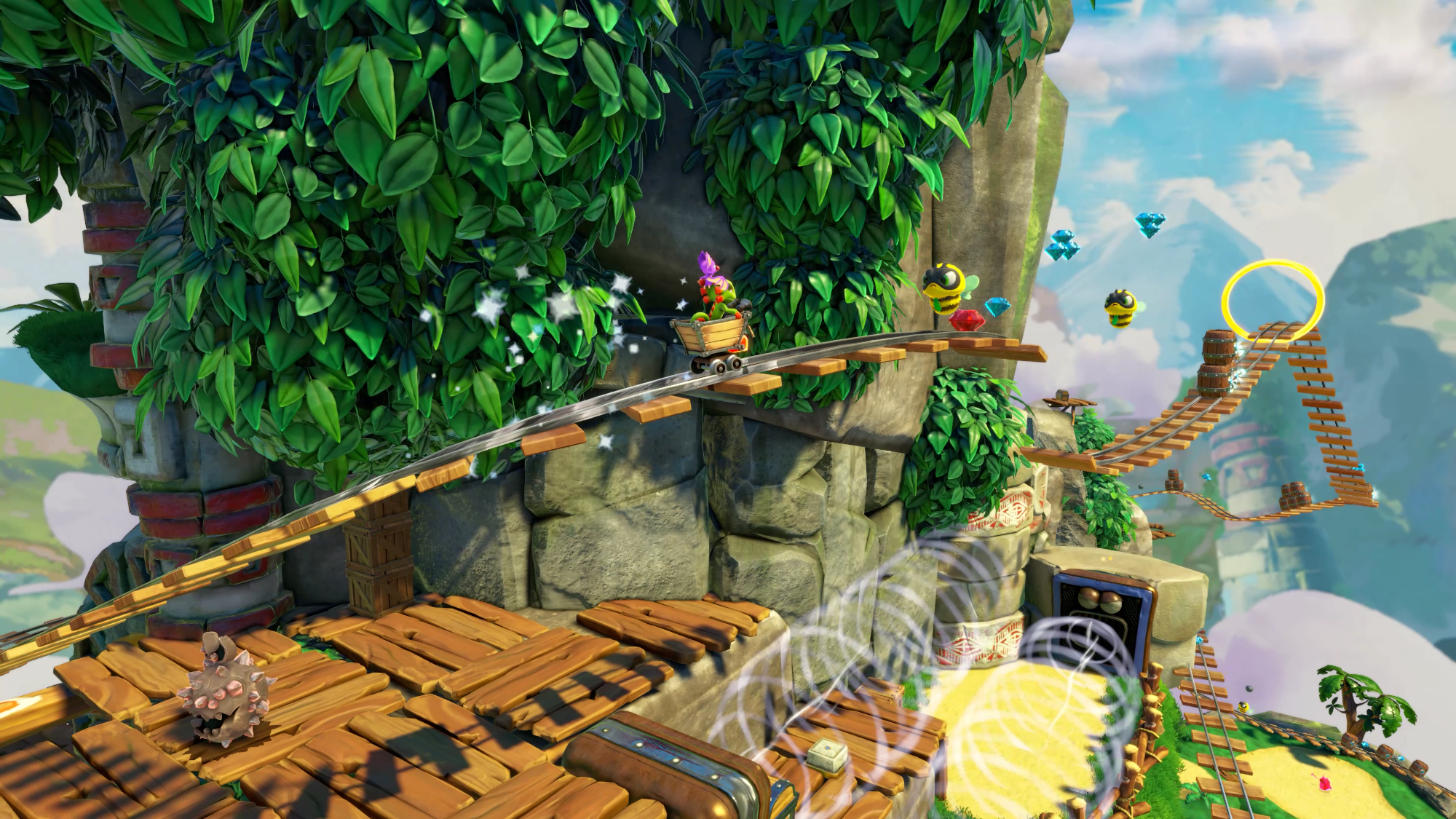
Furthermore, for as much of an impact as the upgraded traversal makes on the overall flow of the game’s design, there are still a few moments where the levels still feel a little disjointed. It’s nowhere near as bad as the original game, which utterly failed to incentivize exploration with meaningful rewards, but there are still echoes of this issue here in the final few levels where you can feel the classic segmented corners of platforming challenges brush up against the attempts of connecting each challenge to one-another and making a cohesive feeling world. Also like the original, while many of them have been revamped, Yooka-Replaylee’s bosses are not much to write home about. With the exception of the final boss, each of them follow simple patterns and never required more than one attempt. The final boss itself does make up for this, requiring some precise platforming and quick reaction, but all of the preceding ones are rather forgettable by comparison.
A great new addition to Yooka-Replaylee is the inclusion of a map and the ability to track overall game progression and in-level progression from the pause menus. It’s hard to believe the original game launched without a map function given the size of its worlds, but thankfully this is something Replaylee can hang its hat on. Frustratingly, the map here is still somewhat limited. Having to pause the game to look at the map without the option to pin it to the HUD became frustrating after a while, as I would have to stop and make sure I was heading in the right direction a few times on my way to a collectable. There’s also no way to track the location of Quills, meaning if you’re down to the last few you’ll almost surely be poking around the corners of each map to try and find them.
Ultimately, despite some lingering issues, the reworkings on display in Yooka-Replaylee are indicative of a team that has paid good attention to a lot of criticism of the original and gone above and beyond in addressing a lot of the major flaws that held it back. Even if you were not fond of the 2017 game, there is a good chance that Replaylee will change your mind.
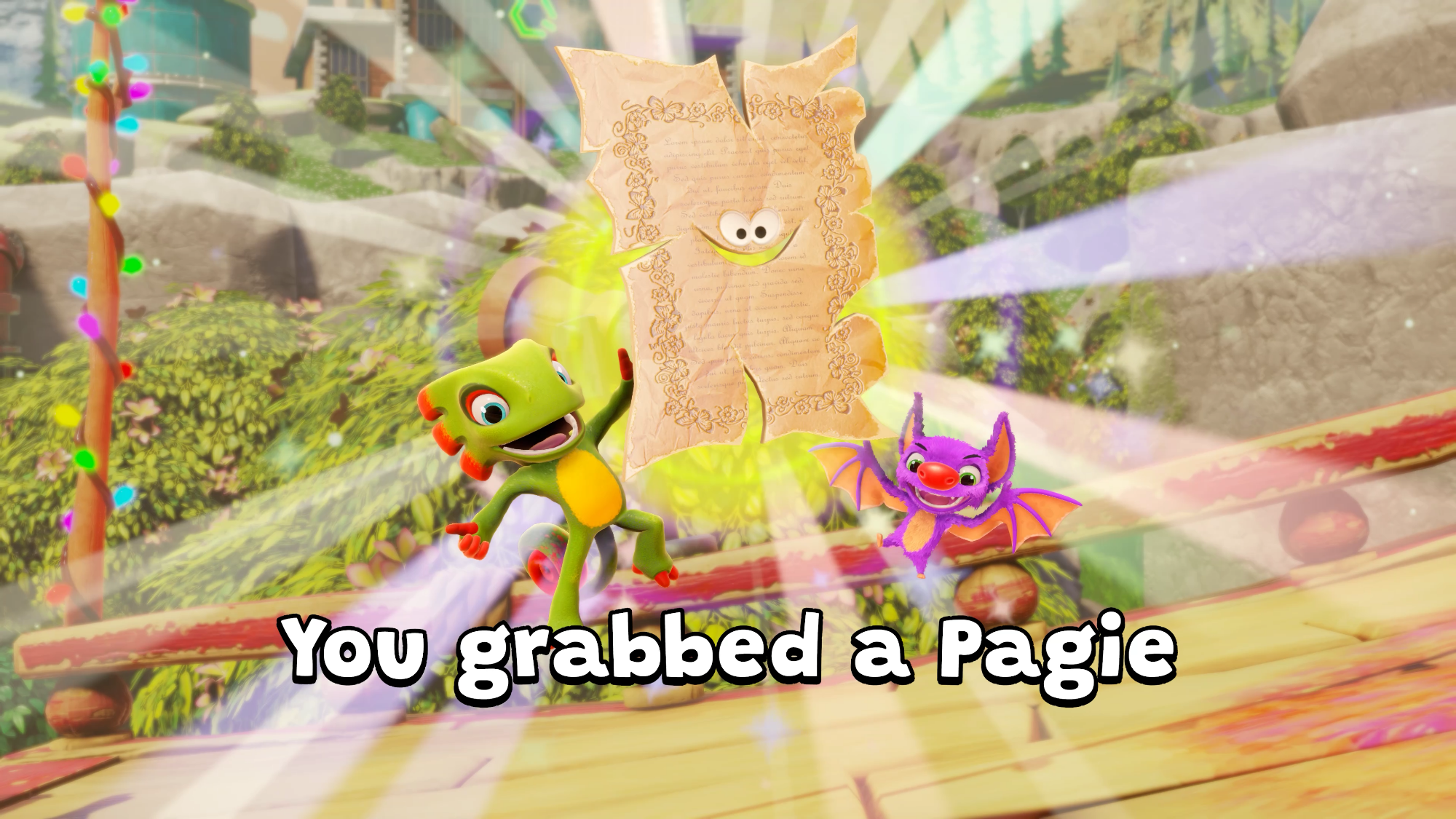
Visuals/Audio
Visually, Yooka-Replaylee is an incredible leap forward from its predecessor. Artistically, Playtonic has gone above and beyond the expectations set forward by both the original game and Impossible Lair to deliver a gorgeous 3D looking platformer. This is beyond just pure visuals, which are still shockingly good, as Yooka-Replaylee pays careful attention to areas in which the original game lacked the polish of its peers. For instance, the original Yooka-Laylee did not feature distinct animations for when the player obtained key collectables, similar to Banjo-Kazooie collecting a Jiggy or Jak and Daxter obtaining a Precursor Orb. This was something that always made the original feel somewhat hollow, but here there are wonderfully expressive animations from the titular protagonists that help give them more personality and give Playtonic greater ownership over their characters. The animation and character modelling in general has had a lot of effort put into it and there’s less of a clash of art styles as was found in the original.
All of this visual overhaul comes at a cost however. While the game runs at a rather high resolution on base PlayStation 5 and mostly hits a constant 60 frames-per-second, there are moments when traversing the wider maps where this can dip. Initially this wasn’t too noticeable and didn’t affect much of my playtime, but digging into the game’s side-content revealed that during the likes of races the frame-rate can get very inconsistent leading to a distractingly deteriorative experience. One of the bosses towards the end of the game also suffered from inconsistent performance as well which could be felt throughout the fight. This is something I hope Playtonic can fix as the majority of my experience was without frame-rate dips, so it was made all the more frustrating when I felt it pushing against me in challenges.
Finally, it shouldn’t come as any surprise that Yooka-Replaylee’s soundtrack is wonderful as it is composed by the brilliant Grant Kirkhope (Banjo-Kazooie, Donkey Kong 64), David Wise (Donkey Kong Country), and Steve Burke (Viva Pinata). The soundtrack has been fully arranged and performed by an orchestra and it shows at every moment, with the music filling out each world with life and vibrancy. While there are a lot of tracks that riff on classic Banjo-Kazooie tunes, they no longer feel indebted to that game amidst some of the boss themes can feel fittingly large and expensive for a series that once felt like it was trying to punch too far above its weight.’
Conclusion
Overall, while there are still some issues, Yooka-Replaylee’s revamped level and game design reflect a more confident identity both for this series and developer Playtonic Games. There is still some room for the series to grow in a potential sequel (perhaps a Twooka-Laylee?), but until then, Playtonic Games has delivered the game fans have wanted since the initial Kickstarter campaign, which happens to also be one of the strongest collect-a-thon 3D platformers of the current generation.

Yooka-Replaylee releases October 9 for PC, Nintendo Switch 2, PlayStation 5, and Xbox Series X/S. The game was reviewed on PlayStation 5.
Thank you to the publisher for providing a game code for this review.
Will you be playing Yooka-Replaylee? Let us know in the comments below.
Yooka-Replaylee Guides
- Yooka-Replaylee Achievement/Trophy Guide
- Hivory Towers Pagies Guide
- Tribalstack Tropics Pagies Guide
- Tribalstack Tropics Quills Guide
- Glitterglaze Glacier Pagies Guide
- Glitterglaze Glacier Quills Guide
- Moodymarsh Maze Pagies Guide
- Moodymarsh Maze Quills Guide
- Capital Cashino Pagies Guide
- Capital Cashino Quills Guide
- Galleon Galaxy Pagies Guide
- Galleon Galaxy Quills Guide
- Skele Tour Achievement Guide
- Eye Sore Achievement Guide
- Vendetta Achievement Guide
